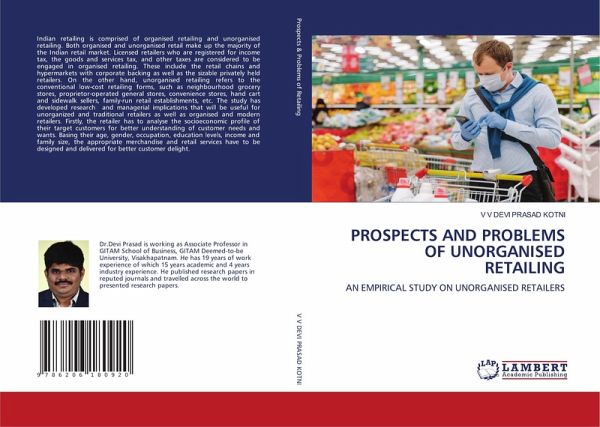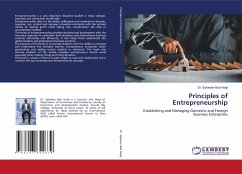
PROSPECTS AND PROBLEMS OF UNORGANISED RETAILING
AN EMPIRICAL STUDY ON UNORGANISED RETAILERS
Versandkostenfrei!
Versandfertig in 1-2 Wochen
53,99 €
inkl. MwSt.

PAYBACK Punkte
27 °P sammeln!
Indian retailing is comprised of organised retailing and unorganised retailing. Both organised and unorganised retail make up the majority of the Indian retail market. Licensed retailers who are registered for income tax, the goods and services tax, and other taxes are considered to be engaged in organised retailing. These include the retail chains and hypermarkets with corporate backing as well as the sizable privately held retailers. On the other hand, unorganised retailing refers to the conventional low-cost retailing forms, such as neighbourhood grocery stores, proprietor-operated general ...
Indian retailing is comprised of organised retailing and unorganised retailing. Both organised and unorganised retail make up the majority of the Indian retail market. Licensed retailers who are registered for income tax, the goods and services tax, and other taxes are considered to be engaged in organised retailing. These include the retail chains and hypermarkets with corporate backing as well as the sizable privately held retailers. On the other hand, unorganised retailing refers to the conventional low-cost retailing forms, such as neighbourhood grocery stores, proprietor-operated general stores, convenience stores, hand cart and sidewalk sellers, family-run retail establishments, etc. The study has developed research and managerial implications that will be useful for unorganized and traditional retailers as well as organised and modern retailers. Firstly, the retailer has to analyse the socioeconomic profile of their target customers for better understanding of customer needs and wants. Basing their age, gender, occupation, education levels, income and family size, the appropriate merchandise and retail services have to be designed and delivered for better customer delight.














